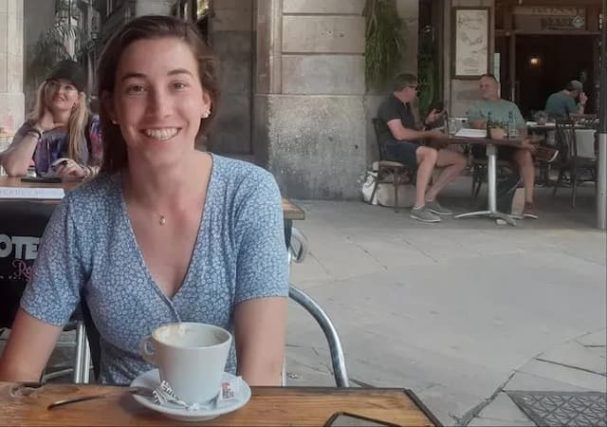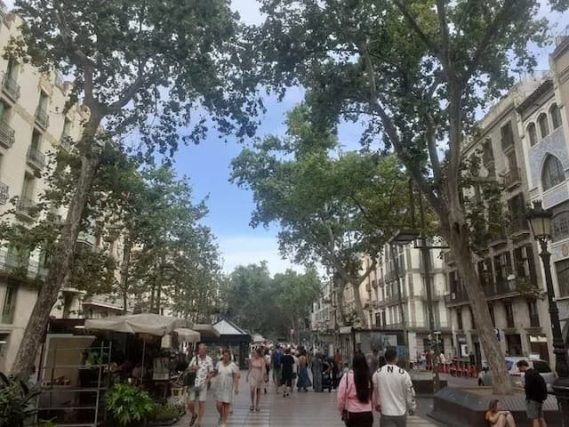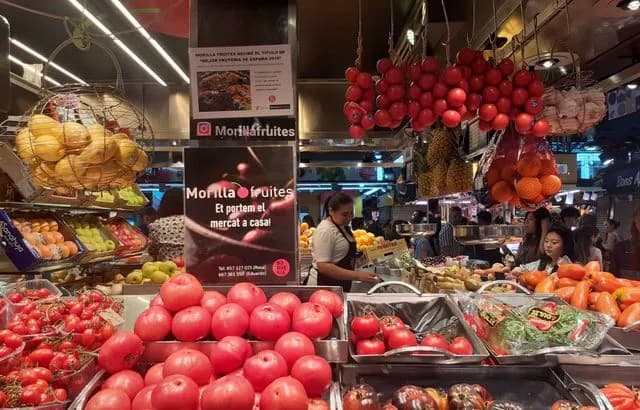COST OF LIVING: With inflation at just 3.2% in May, Spain is a good European student in the face of rising prices. But these flattering figures have not erased the difficult end of the month
- What if Spain had beaten inflation? In a few months, the Iberian country saw its curve fall from 10.8% to only 3.2%, divided by three the rise in prices.
- In Barcelona, where 20 Minutes went, this embellishment has all the trouble in the world to reverberate in the supermarket, where receipts are still soaring.
- For the local population, the spectacular drop in inflation is more of a mirage than an announced miracle.
From our special correspondent in Barcelona,
Sylvia digs into her memory, looking for her mental arithmetic memories. She adds, divides, and finally decides on two packets of ham. Proudly, she deposits the loot in the shopping carts. For months, she’d been content with just one – one slice per kid at dinner. After this long period of lean cow, the ratio will be doubled this evening. It may be a detail for you, but for Sylvia, it means a lot. And maybe even for the whole of Spain.
Because this surplus of jamon on the plates of the Catalan woman and her offspring illustrates the – very – gradual exit of the country from the economic crisis. In May, inflation there was “only” 3.2% over one year, very far from the peak of July 2022 – 10.8%, an absolute record since the start of economic statistics in Spain – or the last year’s average: 8.2%. Inflation at 3.2% is also half that of the Euro Zone – at more than 7%, so much so that Spain is sometimes presented as the good student in this area, a rarity on the continent for a “Southern” nation.
12.9% food inflation
But in the country where the most famous of heroes fight mills by confusing them with giants, we know that we must be wary of appearances. “ The prices are still crazy,” chokes Sylvia, almost hesitating to put the ham back on the shelf. Count more than 20 euros per kilo, where the mother of the family remembers a time not so distant – barely two years – when the latter did not exceed 15.
It’s that 3.2% inflation is low, but it’s still inflation. And the latter is particularly rampant in supermarkets. On food alone, the price increase was still 12.9% in April compared to a year ago, according to the INE, the National Institute of Statistics “When you go shopping, you don’t see no way out or Spanish miracle,” Sylvia laments. And April was no exception: 16.5% food inflation in March, 16.6% in February, 15.3% in January…
“Apart from energy, nothing has gone down!”
The government has however adopted shock measures, in particular a food check and the abolition of VAT on basic necessities from December 2022. The effort, Marta knows well . A volleyball player, she is used to sweating on the pitch. Working in finance, she does not count her hours. And when you lead a double life between Luxembourg and Barcelona, you don’t fear fatigue either. So when judging the government’s interventions, the 30-year-old is not very lenient: “It’s not enough! When you pay, nothing seems to have improved. It is even more expensive than before”. The brunette also has a hard time believing us when we tell her that her country had one of the lowest inflation from Europe. A disbelief pursues her at shopping time, when the price of certain products remains a mystery to her. In particular milk: “I don’t understand why it has increased so much, it makes no sense” In one year, + 33.2%.

The whole Spanish problem then boils down to this big gap between the good economic news heard on the radio and the particularly salty receipts. “I pay 100 euros more per month for my shopping,” sighs Sylvia; 104 even, with its ham madness of the month.
To understand this discrepancy, you have to look at how inflation is measured – by comparing prices with those of twelve months ago. At the start of the war in Ukraine, in February 2022, energy and fuel had seen their cost explode. “Energy prices have fallen in 2023 compared to last year. But compared to 2021, it’s just a return to normal, even higher prices,” says Marta. And above all, “apart from energy, nothing has gone down! “. Proof of this is that core inflation, which does not take into account energy prices, deemed too volatile, is 6.6%, compared to 7% on average in Europe.
The “vida loca” reasoned version
On this afternoon that the Spanish sun knows so well how to beautify, the people of Barcelona are strolling outside, but hastening their pace a little more. There is less budget to sit down and consume at the first opportunity. Even on the Rambla, an iconic artery that pierces the city from top to bottom, where people once stopped easily in front of the 15,000 temptations offered by the avenue. Waffle bombarded with Nutella, multicoloured doughnuts, a pint of sangria, between pleasure purchase and definitive renunciation of the Summer body … Now, we see tables empty of customers and parents a little embarrassed, looking away when not offering the ice cream that the brats demand. It’s that outside too, life has become expensive.

“The worst was last year, everything was going badly and we couldn’t see the end of it,” points out Pedro, Barça jersey on his back. As for its team of hearts, crowned this year after a difficult period, 2023 promises to be a little less terrible: “Everyone announces that inflation is calming down, so we tell ourselves that it will eventually show up and that ‘we can afford to enjoy a little’. Understand: sip a drink in the sun. But in “take away” – a little cheaper. La vida loca, reasonable version.
A 60% higher minimum wage in France
For the footballer, it is not so uncomfortable to sit on a fountain. No, what is really unpleasant is to see foreigners unpack their euros and spread out on the terraces. The tourist has never been in the odour of sanctity in the city – considered too noisy, uncivil and intrusive, but the feeling has worsened in recent months. “We can’t fight against the wages of other countries”, The country’s minimum wage has just been raised to 1,080 euros gross in February. More than 660 before catching up with France.
Nomi, a waiter at the Roma hotel-restaurant, a few steps from this other “most beautiful avenue in the world”, admits it: the prices of the dishes have increased by 4 to 5 euros in his establishment. “But not our salaries,” he squeals, losing for a moment the smile that was eternally grafted onto his face in order to beat passers-by. As a result of this spectacular increase, customers are becoming less loyal. “It is mainly tourists who come, no longer regulars. Especially since during confinement, the Spaniards got into the habit of cooking at home, so with the rise in prices…”.
Good economic news
Even at Mercadona, once reputed to be the cheapest supermarket in town and the bargain for empty pockets, “prices have become as high as anywhere else.”

But like Pedro, Sylvia wants to believe it: things are going in the right direction. If his budget remains extremely tight, he is no longer asphyxiated as in the summer of 2022. “The drop in fuel or the electricity bill is already a first salvation”. And on the economic front, more good news has poured in. With 5.5% growth in 2022, the country is one of the European locomotives. A dynamism that has resulted in a drop in unemployment, to its lowest level since 2008. In terms of wages, unions and employers agreed in April on an increase of 4% this year and 3% in 2024 and 2025, joining the increase in the minimum wage.
In Barcelona, the traditional siesta from 2 to 4 p.m. is slightly less disturbed by questions around the end of the month. But we are careful not to bury inflation too soon, the latter having the habit of rising again. In January, it started to rise again, after five consecutive months of decline. The spectacular fall in March (a rise in prices of “only” 3.3%, against 6% in February), supposed to inaugurate a long-term decline, had not been followed, with a rebound in April to 4.1 %. And not all predictions are good. The Spanish drought, as historic as it is interminable – 32 consecutive months of rainfall deficit – should lead to a “major agricultural disaster” this summer, according to the government, with inevitably a new rise in food prices. As an accompaniment to ham, Sylvia took a whole load of vegetables. “It’s now or never to consume it. Afterwards, it will really become too expensive”. Understand even more than now.




